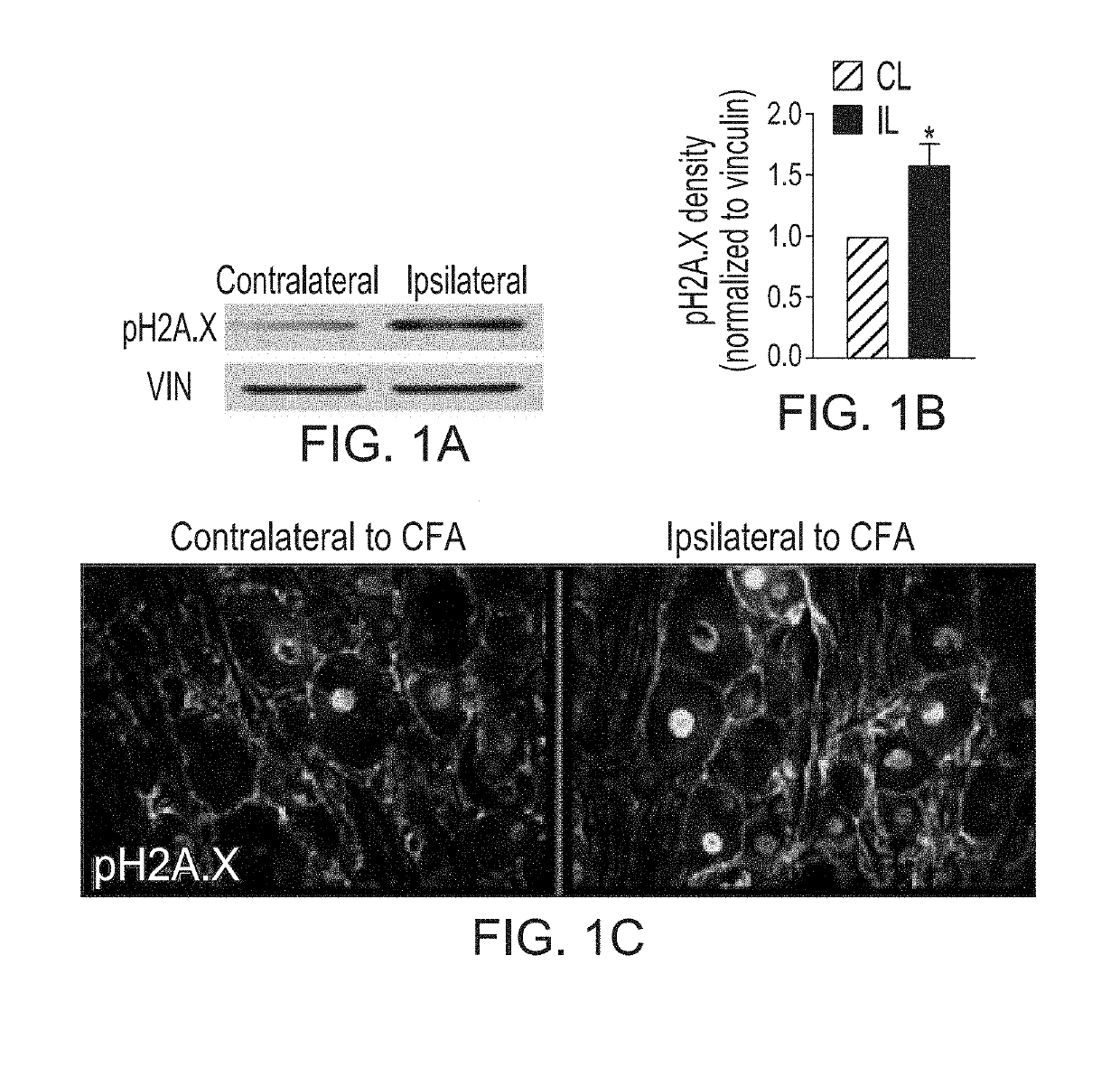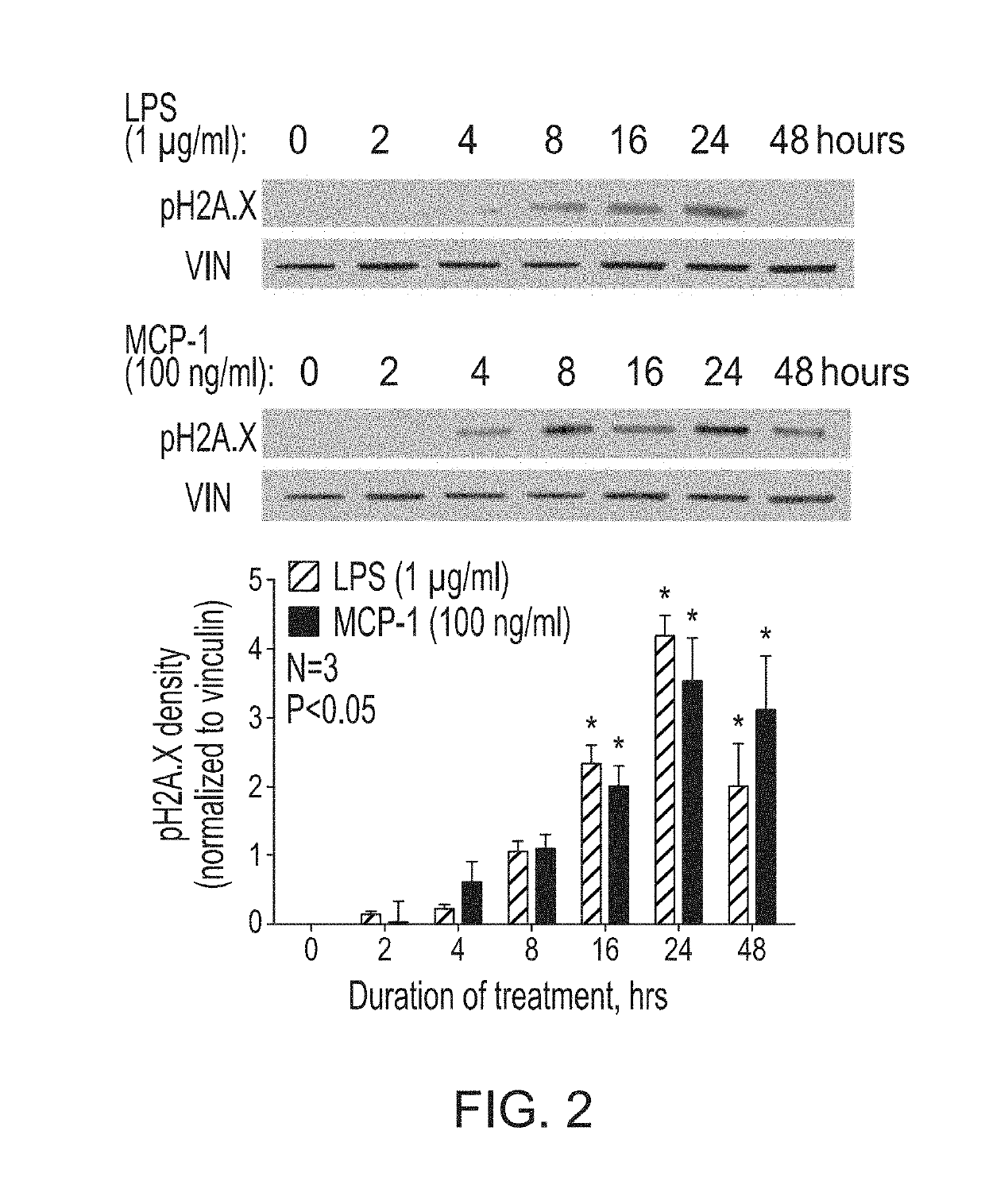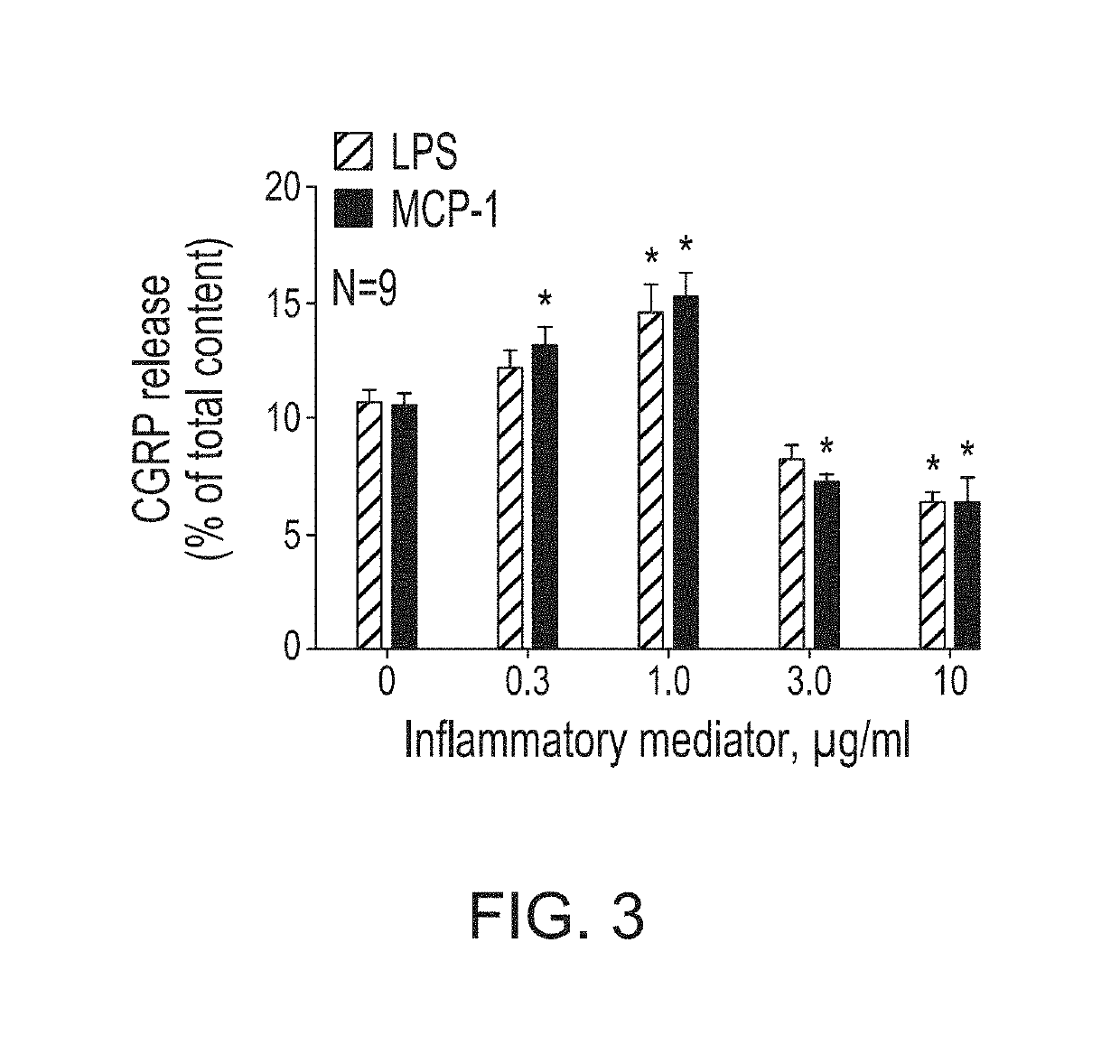Prevention and reversal of inflammation induced DNA damage
a dna damage and inflammation technology, applied in the field of prevention and reversal of inflammation-induced dna damage, can solve the problems of the elimination of global antioxidant treatment effect, and achieve the effects of reducing neuronal sensitivity, reducing inflammation and chronic pain, and enhancing the dna base excision repair pathway
- Summary
- Abstract
- Description
- Claims
- Application Information
AI Technical Summary
Benefits of technology
Problems solved by technology
Method used
Image
Examples
example 1
[0042]In this Example, the dependency of persistent changes in the sensitivity of sensory neurons secondary to exposure to inflammatory mediates on DNA damage was analyzed. Further, the effects of enhancing the DNA BER pathway on DNA damage and neuronal sensitivity were analyzed.
[0043]Materials and Methods
[0044]Unless otherwise specified, tissue culture supplies were obtained from Thermo Fisher Scientific (Waltham, Mass.). Poly-D-lysine, laminin, mouse monoclonal anti-vinculin antibody, 1-methyl-2-pyrrolidone (MPL), complete Freund's adjuvant (CFA), and routine chemicals were purchased from Sigma-Aldrich (St. Louis, Mo.). Nerve growth factor was purchased from Envigo (Indianapolis, Ind.) and Normocin from Invivogen (San Diego, Calif.). Neuroporter was purchased from Genlantis (San Diego, Calif.). Mouse monoclonal antihuman APE1 antibodies were raised in the laboratory and available from Novus Biologicals (Littleton, Colo.), mouse monoclonal anti-phospho-H2AX antibody was from EMD Mi...
example 2
[0082]In this Example, APX3330 was analyzed for its effects on DNA repair activity.
[0083]Neuroblastoma cells were implanted subcutaneously into the right flanks of 6-wk old male NSG mice and allowed to proliferate until tumor volumes ≥150 mm3. Mice were then randomized for treatment with cisplatin ±APX3330 treatment. Cisplatin and APX3330 were administered concurrently for 3 weeks (Day 0-Day 17) and endpoints of neuronal toxicity were assessed within the DRG of mice at several time points following the last dose of cisplatin.
[0084]When isolated sensory neurons were exposed to APX3330, a concentration-dependent increase in Ref-1 / APE1 endonuclease activity occurred, which is not observed in tumor cells. Although APX3330 is a targeted inhibitor of Ref-1 / APE1's redox function, it appears that, in the setting of sensory neurons, it can also enhance the protein's DNA repair (AP endonuclease) activity (FIGS. 7A-7E). APX3330 causes the protein to unfold over time. This unfolding primarily a...
example 3
[0086]In this Example, APX3330 analogs were analoyzed for their ability to protect against neurotoxicity-induced by cisplatin or oxaliplatin while not diminishing the anti-tumor effect of the platinum. Also, the analog APX2009 was assessted for its anti-tumor effects in neuroblastoma cell lines as well as in a 3D spheroid pancreatic tumor model.
[0087]Materials and Methods
[0088]Materials
[0089]General tissue culture supplies were obtained from Invitrogen (Carlsbad, Calif.), and chemicals were purchased from Sigma-Aldrich (St. Louis, Mo.). For sensory neuronal cultures, poly-D-lysine and laminin were purchased from Sigma-Aldrich (St. Louis, Mo.), nerve growth factor from Harlan Bioproducts for Science (Indianapolis, Ind.), and normocin from Invivogen (San Diego, Calif.). Mouse monoclonal antihuman APE1 antibodies were raised in the laboratory and are available from Novus Biologicals (Littleton, Colo.). Mouse monoclonal anti-phospho-H2AX antibodies were from EMD Millipore (Billerica, Ma...
PUM
| Property | Measurement | Unit |
|---|---|---|
| density | aaaaa | aaaaa |
| density | aaaaa | aaaaa |
| density | aaaaa | aaaaa |
Abstract
Description
Claims
Application Information
 Login to View More
Login to View More - R&D
- Intellectual Property
- Life Sciences
- Materials
- Tech Scout
- Unparalleled Data Quality
- Higher Quality Content
- 60% Fewer Hallucinations
Browse by: Latest US Patents, China's latest patents, Technical Efficacy Thesaurus, Application Domain, Technology Topic, Popular Technical Reports.
© 2025 PatSnap. All rights reserved.Legal|Privacy policy|Modern Slavery Act Transparency Statement|Sitemap|About US| Contact US: help@patsnap.com



